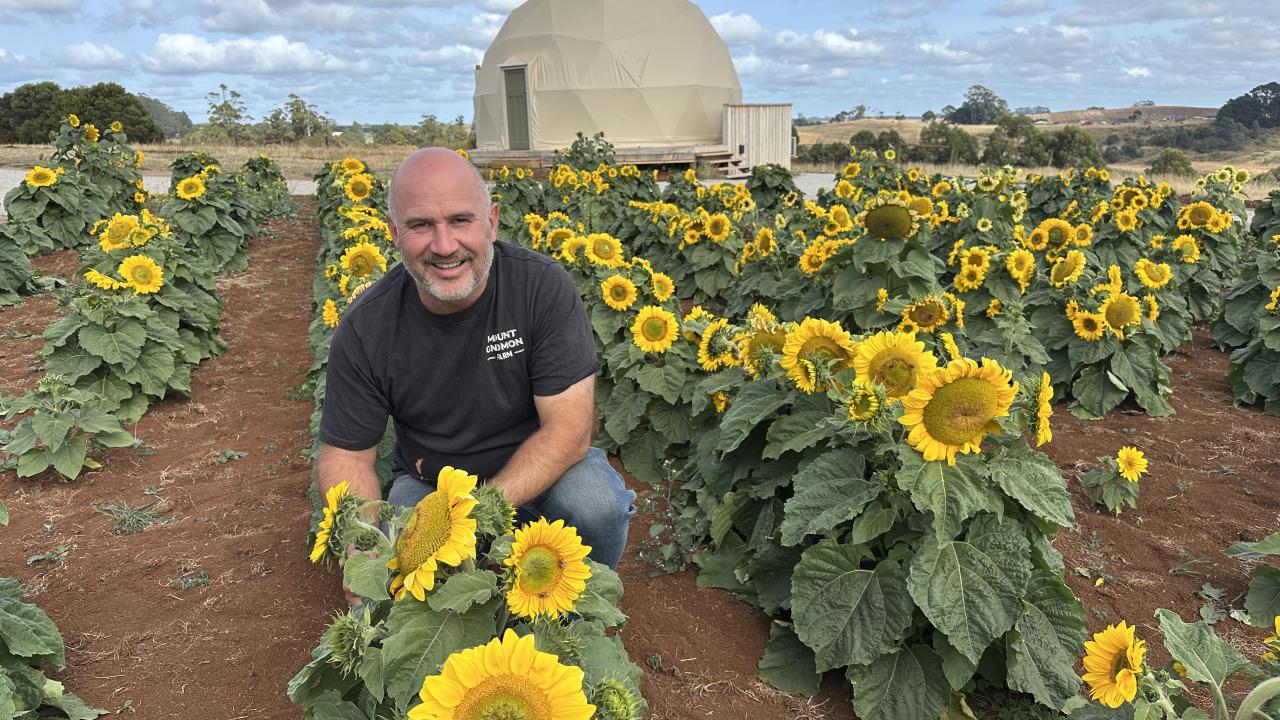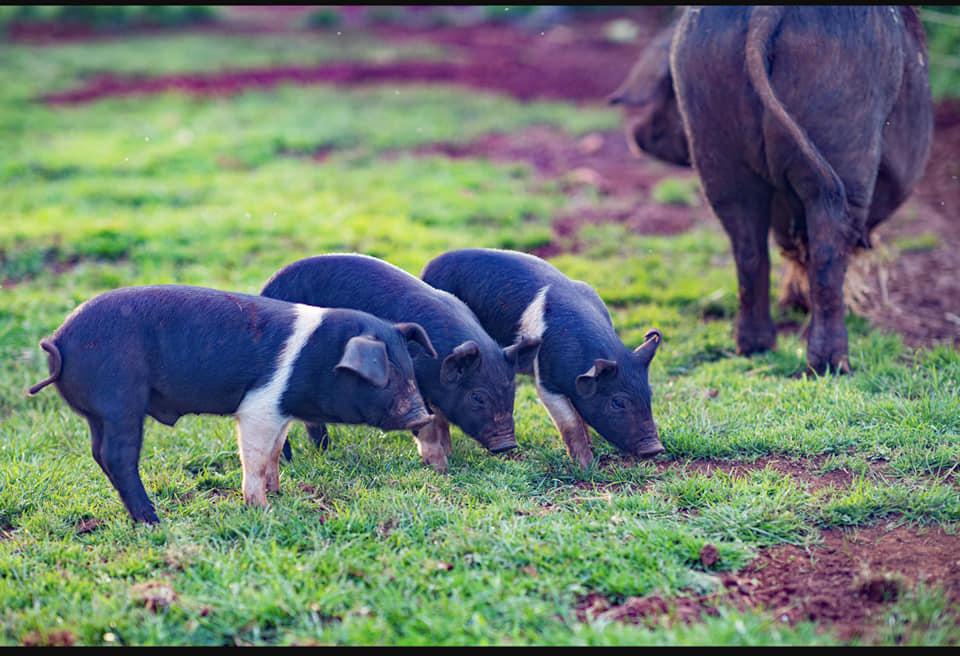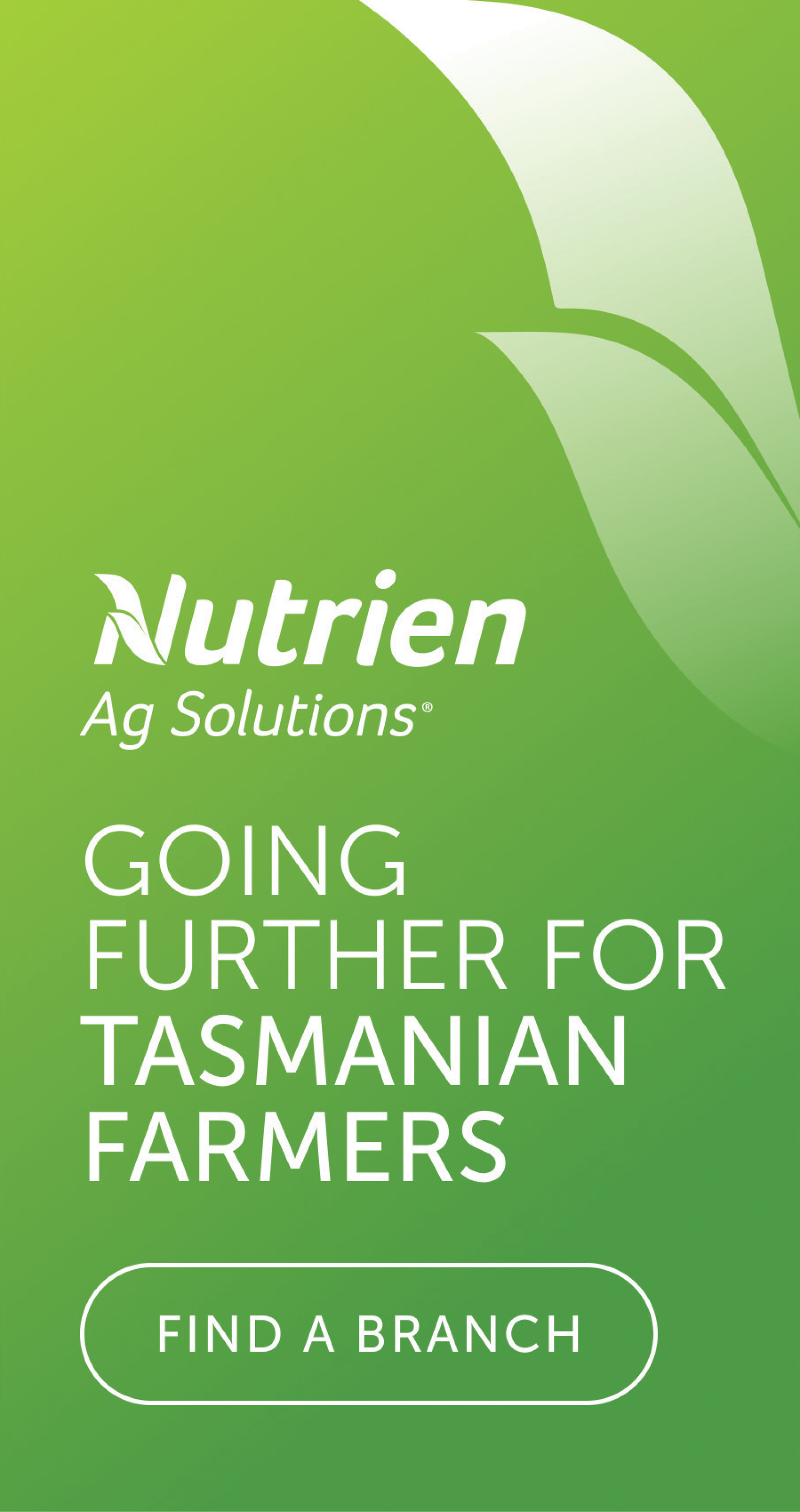Guy brings home the bacon

After starting out as a free-range pork business Mount Gnomon is now one of the North West’s most popular farms but the transition into agritourism has not been without some challenges.
Owner Guy Robertson started the farm’s free range pork business 16 years ago.
The picturesque property sits nestled under Mount Gnomon, a few minutes’ drive from Penguin.
“I think the farm grew organically from that,” he said.
“We had to build a butchery and commercial kitchen to value add so we could make that work because abattoirs were closing down. We built that through necessity but that set us on the path of agritourism because we had a commercial kitchen so we started inviting people to the farm so we could cook for them.”

From there the business started being invited to major food festivals and it grew from there.
“We had a chef, so we’d open up for Sunday lunch and then we started doing lots of events at the farm which were aways really popular,” he said.
Mr Robertson then decided to expand the agritourism side the business and construct a large barn style building that can be used for functions and events.
“We decided to build the barn during Covid because we kept getting rain when we were having events,” he said.
Mr Robertson said at the time he was aware of some upcoming changes to the planning scheme, so they got the function centre before the changes were implemented.
He said the changes now mean that establishing agritourism businesses has become more challenging.
“A farm stay used to be permitted on a farm but now it’s discretionary and if you’re in the agricultural zone, you have to argue the economic and social benefits to the region,” he said.
Mr Robertson said he had come up against a major issue at one point when he was restricted to having just 250 people on the farm.
“When we were restricted to 250 people on our farm for our events we were told to put in a new application and they told me it was a prohibited use to invite the community to your farm,” he said.
“That’s what it came back as and that’s why I decided to challenge it at the planning tribunal. I felt I had the obligation to take that finding and the council’s finding all the way to the tribunal. Because even if we didn’t win, it would make the state take notice that here I am trying to invite the public to the farm. It wasn’t just us, it would impact vineyards having people there and putting on music on their lawns and all those sort of experiences. So even though we proved we could do it, it wasn’t straight forward for planners and things like that, so it’s a bit of a mess.”
Mr Robertson said the lack of clarity around planning and how it applies agritourism ventures is likely to be impacting potential developments in some areas.
“It depends on the council and the way the planner approaches things, but it’s not very clear and not very easy,” he said.
“There’s an argument that you don’t want certain farmland being converted to commercial uses that aren’t farming. I guess we were the classic example where we started as farmers and value added to make our farm viable.”
Mr Robertson said as long as there’s a restriction on the overall footprint of the facilities, he said agritourism developments should be viewed the same way as other on-farm infrastructure.
“I don’t really see the difference between a vineyard or a farm building a function centre to have agritourism activities on their land, compared to putting in a cow shed to milk your cows because it’s infrastructure that’s required to make that business model work, it’s just a different form of infrastructure,” he said.
Mr Robertson said while the Government has announced a review of planning laws around agritourism, that is yet to happen.
The farm still operates a free-range pork business alongside the tourism and events part of the venture.

They run a flock of Shropshire sheep and were the first ones to introduce the heritage breed back to the state.
There is also a small herd of Dairy Shorthorn cows which is anoterh heritage breed
For the past four years they have also been planting large areas of sunflowers as an added attraction to draw more visitor to the farm over summer.
Mr Robertson said the sunflowers also work well with weddings and other functions they have at the farm.
“We were the first ones to so it four years ago and it has worked really well,” Mr Robertson said.
“The first evening we opened our sunflowers four years ago we had 800 people come and there have been thousands come very years since.”
This year the sunflowers were planted in a sun dial pattern next to the farm’s new onsite accommodation domes.
There are a number of different varieties strategically planted to create a unique experience for visitors.
Over the past few weeks thousands of people have turned out to see the display.
The five farm accommodation domes all have ensuite bathrooms and have been designed
to offer visitors a unique experience and take advantage of the farm’s picturesque views.
They are positioned the maximise privacy and each one has an outside deck and barbecue facilities.
Mr Robertson said having on farm accommodation was always part of the long-term plan and capitalises on the farm’s location and natural assets.
As well as livestock the farm also has an apple orchard with 1000 trees which includes a number different heritage cider and eating varieties.
Apples from the orchard are used to make cider which is also sold at the farm and through its events and a local restaurant.
Last year they had 5000 litres of cider made from their apples.




Add new comment